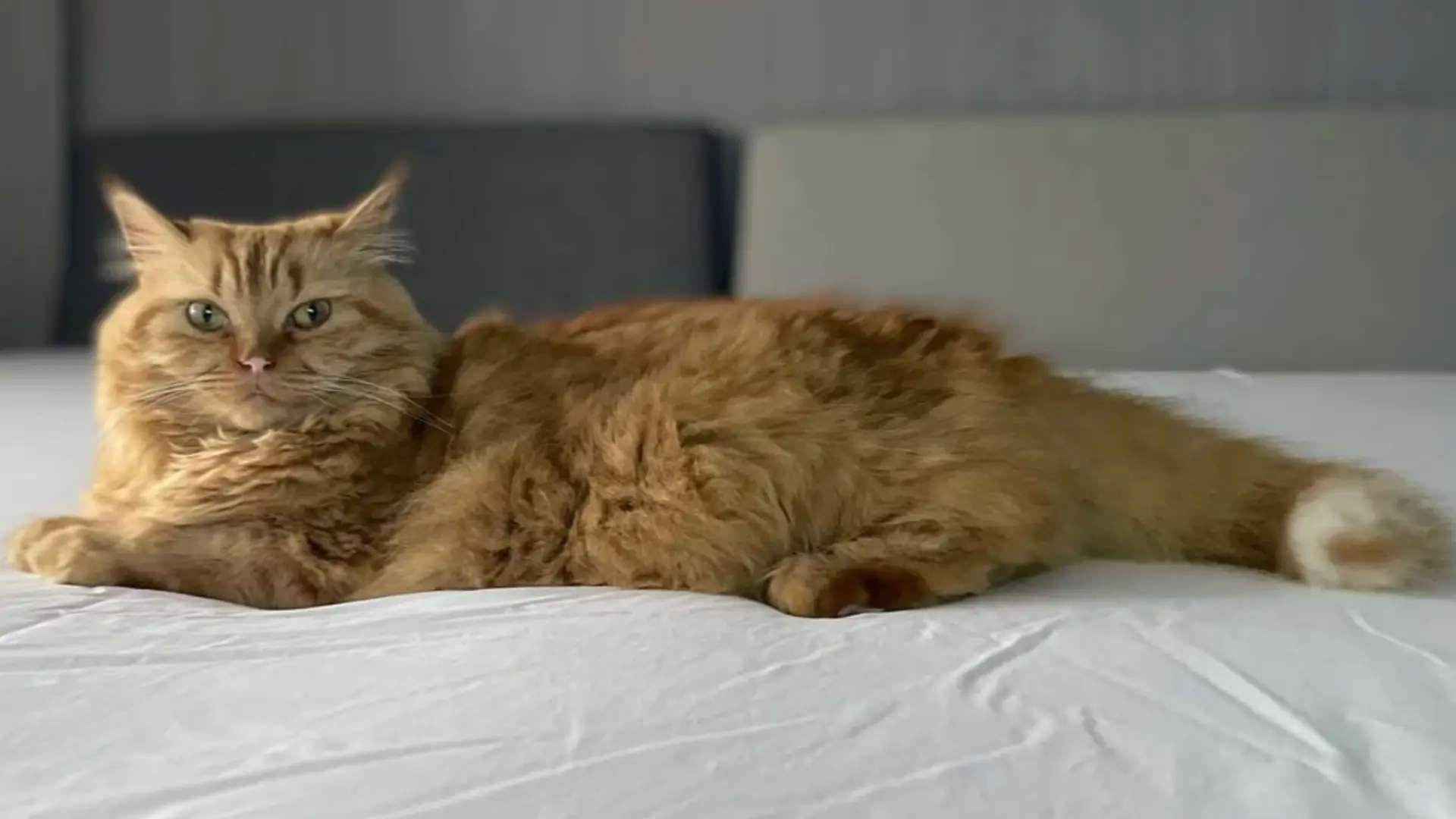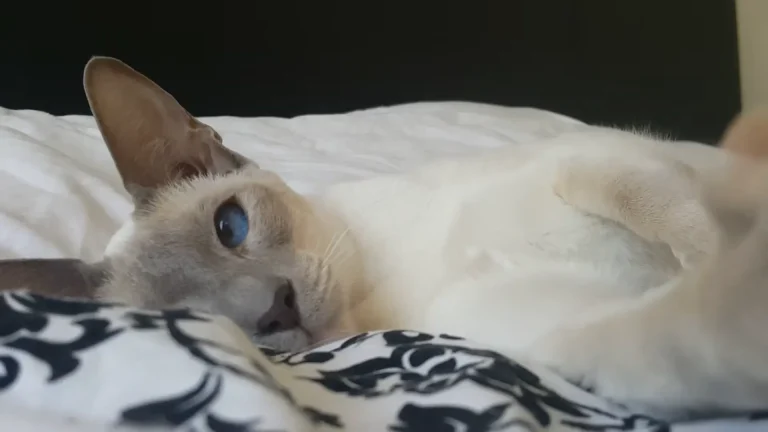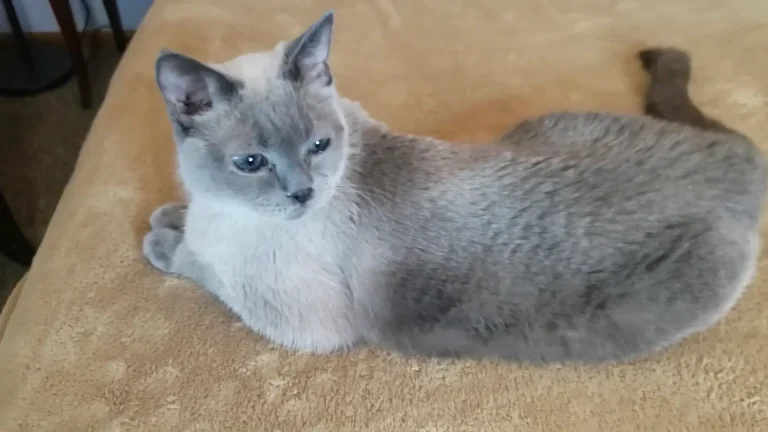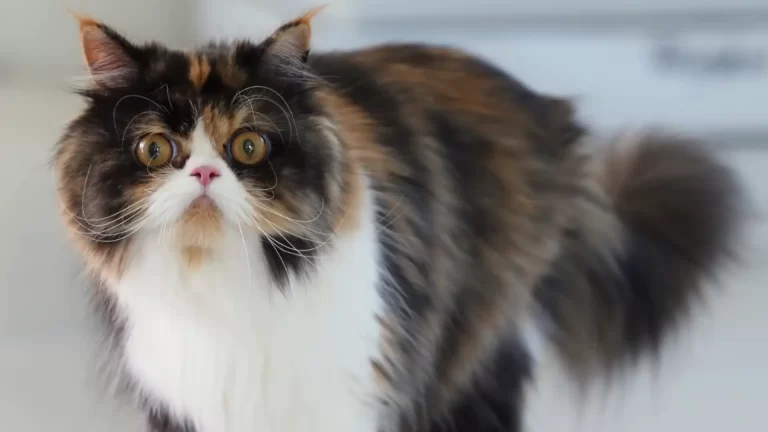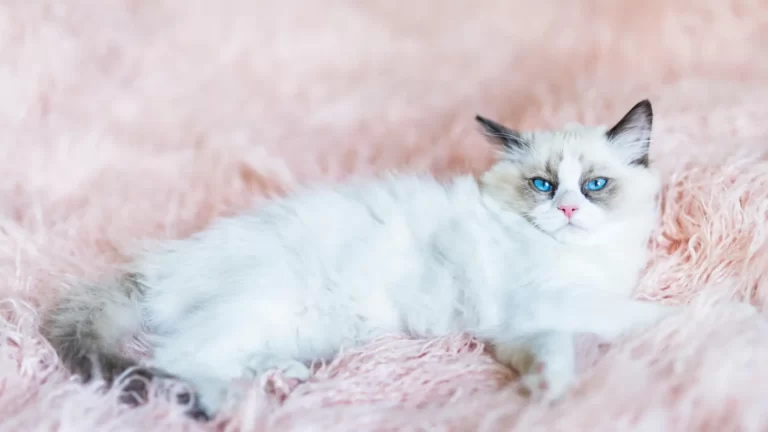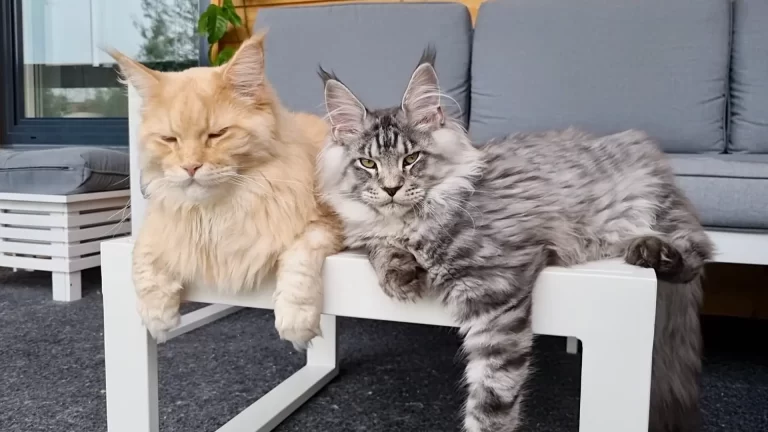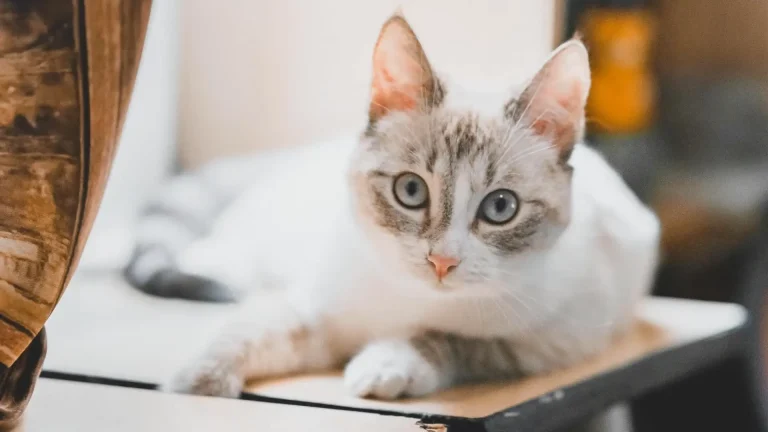Norwegian Forest
An amazing and one of the most attractive cat breed is known as “Norwegian Forest”. As the name shows, this breed is gifted to Norway. It is also considered as a natural and ancient cat breed belonging to Europe. Its popularity can be noticed in the entire Europe including Denmark, France, Sweden, Iceland and Norway. This breed is recognized by all the big cat registration organizations, including the Cat Fanciers’ Association (CFA).
Norwegian Forest cats are large-sized felines with strong and muscular bodies. Their long, dense fur makes them well-adapted cats to cold climates. Their calm and affectionate nature makes them some of the best cats for luxury homes. But it doesn’t mean than you can’t pet them in normal house. All they need are their basic needs and attention from their owner; if given, they are happy anywhere. These cats lived in the forests of Norway, but in modern times, they have become totally house cats.
General Information
- Origin: Norway, Northern Europe
- Population: Estimated 100000
- Suitable Temperature: 15°C to 24°C
- Grooming Requirements: High
- 1st Sighting: 1000 AD
- Price Range: $500 to $2000
Characteristics Overview
- Body Size: Big
- Body Type: Muscular
- Average Weight: Up to 8.8 KG (19.5 lbs.)
- Colors: 60+
- Hair Size: Long
- Life Span: 12-16 Years
- Temperament: Friendly, Social
Personality Overview
- Intelligence: High
- Vocalization: Medium to High
- Affectionate: High
- With Kids & Other Pets: Good
- Hunting Skills: High
- Climbing Skills: High
- Dependency Level: Low
Origin:
These cats are a source of pride for the entire Northern Europe, and the origin is mentioned in their name, that is Norway. They are highly adaptable to the harsh environments of the region. In Norway, these felines are called “Norsk Skaukatt” and “Norsk Skogskatt” in the local language. They were wild cats, but transformed into house cats with the passage of time. They are also called “Wegies” in the United States.
Population:
These cats are in big numbers around the world, but exact figures are almost impossible to provide. There are many states where these felines exist in big numbers, but they don’t count them. In 2003, 400 to 500 births per year have been reported only in France. Based on this data, it is estimated that the population of Norwegian Forest cats is around 80000 to 100000 worldwide.
Norwegian Forest Price:
The price of a Norwegian Forest cat or “Wegie Cat” highly depends on the location of the breeder, bloodline, age and some other features. A champion bloodline cat can cost you around $2000 to $4000, while the normal cats can be bought between $500 and $2000. Kittens of Wegies can also cost you somewhere between $500 and $1500. If you are considering an adoption center or animal shelter to get a Norwegian Forest cat, it may cost you around $100 to $400, depending on their adoption process.
History:
The Norwegian Forest Cats, or Wegies, have a rich history that dates back to 1000 AD, the time of the Vikings. According to rumors, Vikings brought some cats, possibly British Shorthair, with them and bred them with a long-haired cat, either Siberian or Turkish Angora. As a result, Norwegian Forest breed developed. So, we can consider these three cat breeds as ancestors of the Norwegian Forest Cat. These ancestor breeds served as mousers on Vikings ships, where they possibly met to develop this breed.
Initially, these cats were wild and found only in the forests of Norway, but modern Wegie cats are now pure house cats. People discovered that despite living in the forests, these cats are affectionate and human friendly. So, they started keeping them on their farms to hunt pests, rats and other small animals. Over time, these cats transformed into house cats.
Despite their long history, official recognition of this breed started in the mid-20th century. The first organization was formed in 1938, named the “Norwegian Forest Cat Club”, when they recognize the extinction of this breed after World War II. This club helped the breed to increase its population by establishing an official breeding program. Later on, it became official cat of Norway and Sweden in 1950 and 1978 respectively. This breed was registered in Europe by the 1970s, and was introduced outside Europe during this period. The American Cat Fanciers Association (ACFA) recognize this breed in 1994.
Characteristics:
These cats have a muscular body with long, dense fur on the front body parts, including the neck, chest and belly, which slightly changes into semi-long fur on back. Wegies appear to be strong, intelligent and highly adept at climbing heights. Their physical characteristics are described in detail as below:
Lifespan
Norwegian Forest cats are expected to live around 12 to 16 years. They can survive even longer if a healthy diet and proper care are provided to them in an enriched environment. Regular veterinary visits also help to increase their lifespan by diagnosing and preparing for any possible health issues. Some Wegies may live longer or shorter based on their genetics and inherent traits.
Size & Weight
They are generally included in the group of big-sized cats. Long, bushy tail also contributes to their body size. Their weight could reach up to 19.5 pounds, or 8.8 kg. We have mentioned their detailed size in the table below:
| Measurements | Male Cat | Female Cat |
|---|---|---|
| Height | 10-12 Inches (25-30 cm) | 8-10 Inches (20-25 cm) |
| Length | 12-18 Inches (30-45 cm) | 10-15 Inches (25-38 cm) |
| Weight | 12-19.5 Pounds (5.5-8.8 kg) | 10-17 Pounds (4.5-7.7 kg) |
Appearance
These cats are larger than normal cats; in fact, they resemble as Maine coons, but they are smaller than them with a slender frame. They have almond shaped eyes just like Siamese, a big triangle-shaped head, tufted ears and a long, bushy tail. Their double coat helps them to be a perfect cat for cold areas. One thing you might not like about them is that these felines shed a seasonally. Their winter coat will shed in the summer, and you need to groom them consistently.
Wegie cats are expert to climb, and their strong, muscular legs make them excellent climbers. They have round and large paws, making them good mouse catchers. Fur on their paws helps them feel comfortable on cold surfaces. In short, this combination of strong legs and big paws gives them the power to climb on high trees and walls.
Colors & Patterns
Norwegian breed can be seen in almost all patterns and colors except pointed pattern. It means that cat lovers have a wide range of choices. These cats have unique charms in each color. Below are some important colors available in each pattern.
Solid Colors:
These cats look gentle and sober in solid colors. Some solid colors are common in this breed, while some are rare. A list of solid colors is as below:
- White Norwegian Forest
- Silver Norwegian Forest
- Cream Norwegian Forest
- Black Norwegian Forest
- Red Norwegian Forest
- Blue Norwegian Forest
- Brown Norwegian Forest
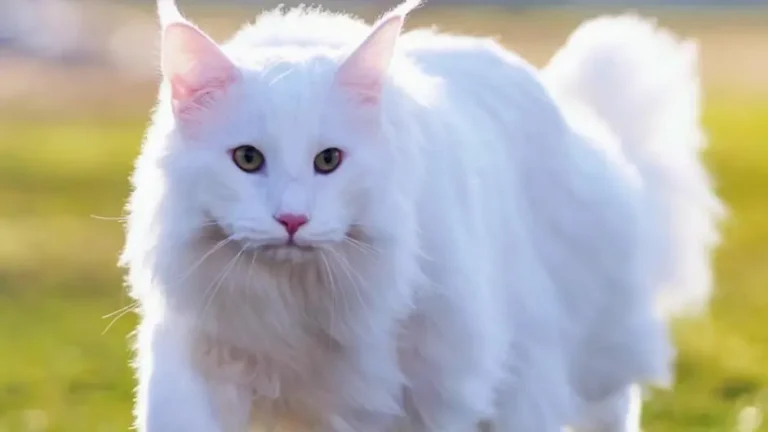
Tabby Colors:
These cats are also available in each tabby pattern including ticked tabby, mackerel tabby and spotted tabby. This pattern is also common in these cats.
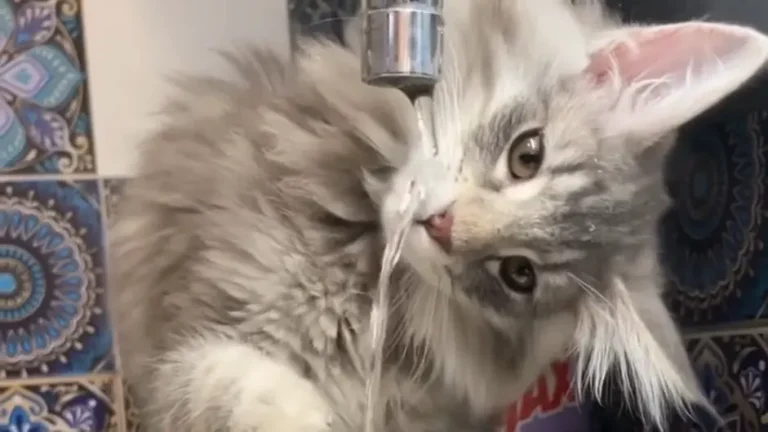
- Blue Tabby
- Red Tabby
- Silver Tabby
- Cream Tabby
- Brown Tabby
Bi-Color Pattern:
It is very common and highly demanded pattern of Wegie cats. They look more attractive and beautiful in this color pattern.
- Brown and White
- Red and White
- Black and White
- Blue and White
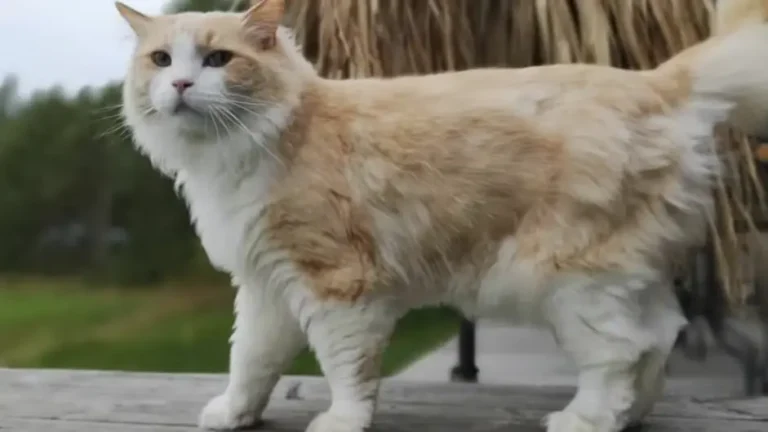
Smoke Shaded Pattern:
Some cats have fur with a solid color at roots that becomes darker on the tips, giving them a smoke shade. This pattern is not much common as compared to other patterns.
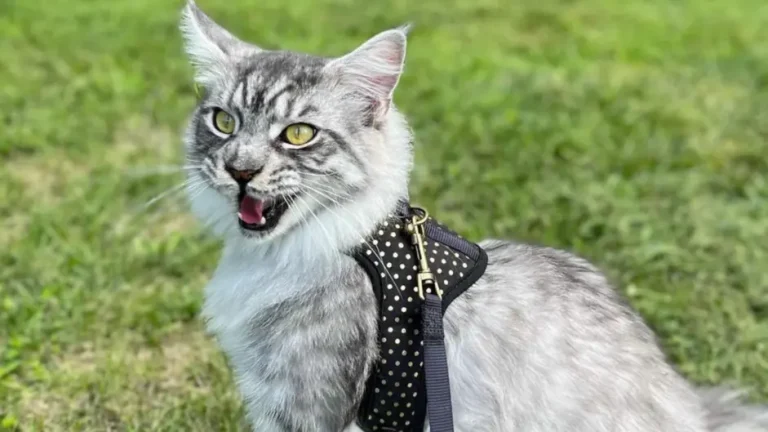
- Cream Smoke
- Red Smoke
- Blue Smoke
- Brown Smoke
Other Patterns:
Many other pattern can be seen in this breed including Calico and Tortoiseshell. Patches of red, black or any other color in an unrecognized way make a unique color pattern in this breed. Whatever the color is, these cats always look awesome.
Temperament
These cats spent a long time in the wild, yet it didn’t affect their human friendly and affectionate nature. Today, these cats are considered among the best family-friendly breeds. Their companionship is long lasting and they love to be around humans. Some breeds tend to be close to one person, but these cats equally treat every member of the family. They prefer to be near their human and avoid sitting on their laps. So, you can’t say them the best lap cats, but still you can enjoy cuddling and hugging them.
Another positive aspect is that they are not overly dependent. Like Ragdolls, these cats are also famous for their calmness and low vocal tendency. That’s why, people who want to enjoy companionship of a feline without noises, prefer them. Their “not demanding” nature helps comfort you a lot, as they can find something to do themselves.
Personality of Wegie Cats:
These cats are highly loving and affectionate towards their parents. Being around their humans is their natural intent and all the family members can enjoy their companionship. They are also considered as “dog-like” cats because they are territorial and ensure that everything is OK. Below are some common personal traits of this breed.
Intelligence
These cats don’t need any praise for their intelligence as they display their intelligence in their every activity. Their smartness and quick learning skills make them favorites for beginners. Learning tricks, obeying their human’s commands, and exploring surroundings and things around them are their favorite activities. Their intelligence can also be noticed when they play with their toys.
Affectionate Nature
Even though they don’t want to sit on their human’s lap or sleep with them on their bed, still they are affectionate. These cats shower love in return for the care you do for them. These cats can easily be cuddled and hugged. Their affection is not limited to one person; every family member equally experiences their love and attention. They ensure to be present near to their human and always respond quickly when called.
Behavior with other Pets & Kids
These cats are amazing playmates for both kids and other pets, even they tend to be a security guard for little kids. These gentle and highly intelligent felines know what is good and bad for kids. You can trust to leave your kid alone with them. Their calm and sharing behavior also allows other pets to feel comfortable with them.
Vocalization
These cats can be found chirping all around the house. They normally meow in sweet and melodious voices that melt your heart. These cats are generally called highly vocal, but their voices do not disturb you. In fact, you would love them chirping around you. They use their meows to communicate with their owners, to tell them or to demand something. If you see them yowling, then there must be some problem with them, and you must figure out the issue and solve it.
Dependency
You can easily pet them even if you are a busy person, as they are not known for being dependent. This breed is calm and also social, without being dependent. These gentle cats will find activities for themselves, and do not disturb you. Only thing they demand from you is attention and care. If you have other pets, then you need not worry because these cats keep them busy playing with other pets. Only their food, grooming and health care depend on you.
Hunting
Like Maine Coons, this breed is also recognized for its hunting skills. The ancestors of this breed performed hunting jobs on the Vikings ships for a long time, and these cats also lived in forests, where they had to hunt for their food. So, it can be said that their excellent hunting skills are natural. Their body features, including big paws and strong legs help them to hunt perfectly. These cats also enjoy hunting spiders and other pests at your home as it’s a way of joy and fun for them.
Health Issues:
| Diseases | Explanation | Symptoms | Treatments |
|---|---|---|---|
| Hypertrophic Cardiomyopathy | Heart disease affecting heart muscles. | 1- Coughing 2- Difficult breathing 3- Lethargy | 1- Healthy diet 2- Medication 3- Veterinary Check-ups |
| Hip Dysplasia | Hip joints are disturbed in this disease | 1- Pain 2- Difficulty in walking 3- Lameness | 1- Medication 2- Physical exercises 3- Weight management 4- Surgery in some cases |
| Retinal Dysplasia | An eye problem | 1- Blindness 2- Vision problem | 1- Healthy diet 2- Supportive care |
| Spinal Muscular Atrophy | Genetic issue affecting Spinal cord | 1- Hind legs weakness 2- Muscle wasting | 1- Physical exercise 2- Healthy environment 3- Supportive care |
| Patellar Luxation | Kneecap dislocation | 1- Limping 2- Difficulty in moving legs | 1- Surgery 2- Medication |
Care:
Caring is essential for any pet you have, including Norwegian Forests. These cats require your attention and care to stay healthy and look attractive. Each breed has unique requirements for care, and some basic caring steps for Wegie cats are as below:
Research
Must do some research about this breed before bringing them home. It will help you to understand the breed and fulfil its requirements. Getting some knowhow about the breed will enable you to handle any unfortunate conditions regarding your pet. You will also determine whether the breed is excellent choice for you and your family or not.
Quality Nutrition
High quality diet is most essential for their health. You should prefer to provide them with food specifically made for their needs. A balanced diet that contains the exact quantity of proteins, vitamins and minerals will keep them fit for all types of activities. Also avoid over-feeding them because it may cause some health issues. A scheduled feeding will help you to maintain their health.
Fresh Water
Always place water bowl in an airy and easily accessible place for them. Fill the bowl with fresh water two times or at least one time a day. In cold areas, these cats do not need much water, but still you need to pay attention to their water bowl. In normal, or hot areas, it is very important to provide them with fresh water to keep them hydrated.
Grooming
All long-haired cats need some extra grooming, including the Norwegian Forest cats. You need to groom your Wegies once a week acknowledging that they shed a lot; kittens may require grooming on daily basis because they can’t keep themselves clean like adults. Cleaning ears and teeth, bathing, brushing fur are basic steps for their grooming. You also need to clean their paws because they have fur on them.
Exercise
Despite their big size and muscular bodies, these cats are as active as the other normal cats. Running behind laser light, chasing mice or any other small animal are their favorite activities. They also enjoy climbing trees, curtains and wall. You should bring toys that keep them physically engaged, preferably cat trees. Running is most important for them to avoid overweighting.
Social Interactions
Nobody can deny the importance of social interactions for these cats. This is very social, sober and well-mannered breed and requires interaction with humans and other pets regularly. These cats wouldn’t like to be in your hands, but they love to stay around you and interact with you. Leaving them alone for quite a while is not possible as it may lead them to anxiety.
Pros & Cons:
Pros
Cons
FAQs:
Conclusion:
Norwegian Forest cats are popular all around the world due to their social behaviors and charming personality. These cats are a source of pride for Northern Europe, especially Norway. Many European countries have given them the status of state cats. Their quick learning and hunting skills are impressive, and their double coat makes them best cats for colder areas. Their winter coat sheds in spring season. These cats are called by different names in different regions. We believe that you are now familiar with this breed after reading this article.

